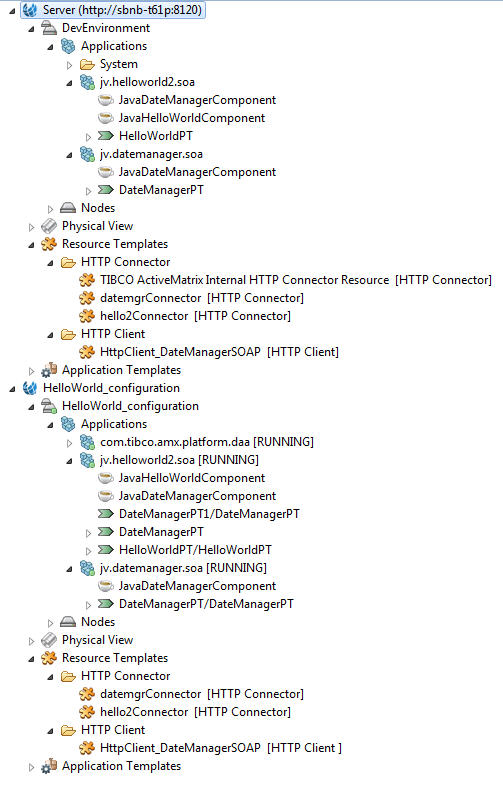Administrator Explorer View
The Administrator Explorer view displays a tree view of the remote objects managed by an Administrator server or objects running on a local debug node. The objects include administrative objects such as environments, applications, resource and application templates, and runtime objects such as hosts, nodes, and resource instances.
The format of the objects in the Administrator Explorer view varies depending on whether the objects are running on a remote or local debug node. For example, in Administrator Explorer View, the objects under the jv.helloworld2.soa application are slightly different. On the remote node managed by the Administrator server named Server, the application shows two components (JavaDateManagerComponent and JavaHelloWorldComponent) and one service, whereas on the local node managed by the HelloWorld_configuration run configuration, the application shows the same two components, the same composite service, and two component services (DateManagerPT1/DateManager and DateManagerPT).
You can click objects to display properties of the objects in the Properties view. For example, if you click an application, General and Distribution tabs display in the Properties view. The Distribution tab displays the nodes on which the application is deployed. If you click an application template, General and Instances tabs display in the Properties view.
You can also perform object-specific actions by right-clicking an object. For example, if you right-click a remote application you can attach a debugger to or remove the application. If you right-click a binding you can invoke the Web Services Explorer and generate a SOAP request.

